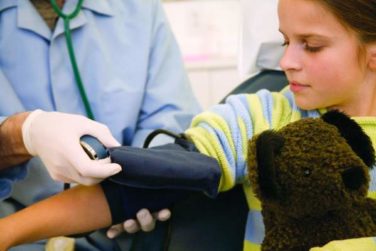AT NAPCRG 2017
MONTREAL (FRONTLINE MEDICAL NEWS) – Have restrictions on scope of practice contributed to primary care physician burnout?
Perhaps they have, according to a recent survey that saw less burnout among recently graduated family physicians who retained inpatient or obstetrics work.
Of the 1,167 family practice physicians surveyed, 42% reported that they felt burned out once per week or more, said Amanda Weidner, MPH , of the University of Washington Family Medicine Residency Network in Seattle. However, some physicians were significantly less likely to experience burnout: those whose practice included adult inpatient medicine (P less than .0001), those currently delivering babies (P = .0007), and those who routinely saw their patients at the hospital or in patients’ homes (P = .0016 and P = .02, respectively).
Also, physicians who didn’t feel burned out when surveyed performed more procedures or had more clinical areas of practice than those who reported burnout (7.49 vs. 7.02; P = .02).
Surveys of family practice physicians have reported varying levels of burnout, ranging from as low as 24% to as high as 65%. “Either way, we can probably agree that even one quarter of physicians saying they’re burned out is too many,” said Ms. Weidner during a presentation at the annual meeting of the National Association of Primary Care Research Groups.
Ms. Weidner and her colleagues polled young family practice physicians about their feelings of burnout and about their practice scope. She said she and her colleagues wondered about the association between those factors because the scope of primary care practice has been narrowing while primary care physicians have been reporting increasing levels of burnout – and at a higher rate than many other specialties.
Their survey, mailed in 2016, was sent to American Board of Family Medicine (ABFM) diplomates who were 2013 graduates of family practice residencies. Overall, 67% responded to the survey. Ms. Weidner and her colleagues used responses from the 78% of respondents who reported providing outpatient continuity care, rather than those who were hospitalists or who practiced in noncontinuity care areas, such as urgent care or emergency medicine.
Participants were asked to indicate how often they felt burned out in their work, with seven choices that ranged from “every day” to “never.” This single question from the Maslach Burnout Inventory , said Ms. Weidner, has been shown to correlate well with the emotional exhaustion domain of the inventory: Any response indicating feeling burned out at least once a week correlates with burnout.
In addition to asking physicians about the scope of their practice and their practice setting, the investigators assessed their work effort by asking about the number of patient encounters per day and whether respondents had after-hours calls and saw patients on weekends and evenings.
Respondents were, on average, about 36 years old, 58.6% were female, and 84.7% held an MD (rather than a DO). Two-thirds were graduates of U.S. medical schools.
Maintaining a broad scope of practice for family physicians can help fulfill the “triple aims” (enhancing patient experience, improving population health, and reducing costs) – now sometimes characterized as the “ quadruple aims ”with the addition of preventing burnout – of health system performance, said Ms. Weidner. In addition to proven cost reduction, she said, maintaining a broad scope of practice in family practice can enhance the patient experience and improve population health. If increased scope of practice also is associated with improved physician satisfaction, then it will also contribute to the fourth aim, she said.
Questioners in the audience asked Ms. Weidner and her collaborators to dive a little deeper into the data. One audience member remarked that she sees colleagues scheduling themselves for inpatient coverage or an afternoon of endometrial biopsies and other procedures as a strategy to avoid clinic time. She asked whether it’s the practice variety or the reduced number of clinic hours per week that’s driving the lower burnout rates.
Ms. Weidner acknowledged the possibility that working in other practice settings might reduce workload in terms of paperwork and patient communication. However, she pointed out that the number of hours worked per week was not associated with burnout; additionally, she said, both physicians who reported burnout and those who did not saw about the same number of patients per day.
Another audience member wondered whether some of the burnout – and practice restriction – is related to the fact that fewer physicians own their own practices. Maybe, he said, “There’s less of an obligation to be there to take people through all phases of life.”
Some practice restriction may be self-imposed, as may be the case when physicians don’t want the call obligations associated with obstetrics, but some of it is imposed by the system as an attempt to increase clinic throughput, Ms. Weidner said. “This is something for health systems to pay attention to. It’s less of an individual issue and more of a health system issue.”
Ms. Weidner reported that her work was supported by an ABFM Foundation grant while she was a visiting ABFM scholar.
On Twitter @karioakes






